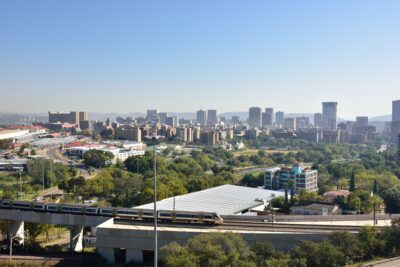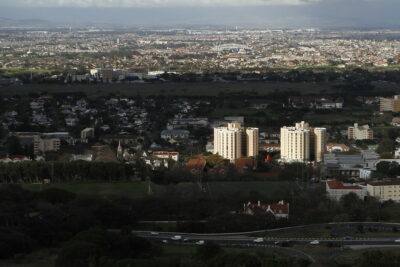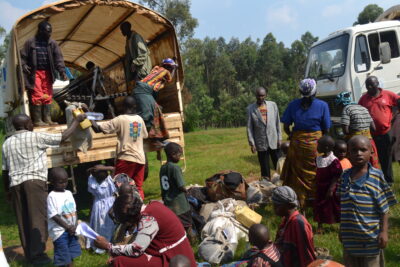Fewer than ten million people live within Cuba’s forty-four thousand square miles. Its population is relatively homogeneous in terms of race, ethnicity, and wealth; the median age is twenty-two years. In the seventeen years of its ongoing revolution, Cuba has brought about a transition to socialism and has developed strong ties, both with the Soviet Union, and with other Eastern European nations. Its achievements in areas such as education, employment, health, nutrition, and recreation, as well as many of the characteristics of its social sciences, derive from the fact that Cuba is a small, young, homogeneous, socialist, Third World nation.1For Cuban social and economic statistics, see the Anuario Estadistico de Cuba, 1974, published by the Junta Central de Planificacion, Havana, in late 1976. A summary of changes through 1974 is presented by Kalman H. Silvert and Frieda M. Silvert in “Fate, Chance, and Faith,” American Universities Field Staff Reports, 2(2):4-6, 1974.
The structure of Cuban social science
The social sciences began in Cuba in the early part of the twentieth century. Anthropometric work on criminal populations, child growth surveys, and a few ethnographic studies had been carried out by 1930. By the 1950s, a few social scientists were assisting marketing firms to carry out national public opinion surveys; at the University of Havana, psychology courses had been established in the division of natural sciences and courses in anthropology, social history, and social theory were being offered through a concentration established in the faculty of the humanities; and some courses in economics were given at the University of Havana and at the private University of Villanueva. These beginnings of Western social sciences, which focused on a relatively narrow range of phenomena, were interrupted in 1959; since then, new social sciences have taken their place.
Although social science research takes place in Cuba, few reports on it are easily available to the international social science community. Research aimed at gathering information for state planning is continuously commissioned by the government and by the Communist Party. Until 1973, however, the formal development of the social sciences was given a very low priority. Courses were not widely offered in universities and research techniques were used primarily to gather data concerning practical problems. This lack of attention was largely a result of the economic conditions in postrevolutionary Cuba. Party planners felt that the social sciences would not yield sufficient immediate results to justify heavy early investments.
In the last three years, with the growth of the Cuban economy, university enrollments in the social sciences have been increasing at rates faster than those of other fields. However, the faculties of the humanities and social sciences—largely composed of the departments of social anthropology, literary history, social history, and sociology—still have relatively small enrollments compared with other faculties in Cuba’s four universities at Havana, Oriente, Las Villas, and Camagiiey. For 1972-73, the Anuario Estadistico reports 43,261 university students:
10,914 in faculties of technology
8,393 in faculties of natural science
6,253 in faculties of agricultural science
6,247 in institutes of pedagogy
4,747 in faculties of humanities and social science
3,968 in faculties of medicine
2,739 in institutes of economics
Although the composition of these faculties is not uniform in every university, economics and psychology are generally outside of the faculty of humanities and social science. Economics is generally located in a separate policy-oriented institute and psychology is generally in the faculty of natural science. The precise array of departments in faculties varies among universities. At the University of Havana, the faculty of humanities and social science contained, in 1974-75, departments of philosophy and sociology, and schools of history, journalism, law, letters, and political science. The institute of economics had departments of international relations, mathematics, measurement, planning, and political economy, as well as teams studying agriculture, the fishing industry, steel, sugar, and transportation.
In 1976, low social science enrollments continued at the University of Las Villas, Cuba’s third largest university.[ref]These figures were obtained by Franklin W. Knight, Department of History, The Johns Hopkins University, in an interview with the rector of the University of Las Villas in April 1976.[/ref] The distribution of the 8,282 students by faculties was:
3,568 m the institute of pedagogy
2,346 in the faculty of natural science
1,077 in the faculty of agricultural science
575 in the institute of economics
567 in the faculty of medicine
149 in the faculty of humanities and social science
Compared with nationwide statistics for 1972-73, higher proportions of students at the University of Las Villas are enrolled in the pedagogical institute and the faculty of natural sciences—and fewer in the other fields. This may reflect changes in educational policy since 1972-73 or the distinctive role of the University of Las Villas in Cuba’s system of higher education.
“The generation of knowledge through social scientific techniques is an essential feature of Cuba’s centrally planned society.”The enrollment patterns reflected in both of these sets of statistics indicate that, in comparison with the social sciences in the United States, different disciplines are included as social sciences, and economics is the only discipline which is offered on a large scale to university students. Although university training is important, universities are far less central to social scientific research and training than they are in the United States. As discussed below, the generation of knowledge through social scientific techniques is an essential feature of Cuba’s centrally planned society. Government agencies and ministries, ranging from the Communist Party, to the Ministry of Foreign Trade, to the Federation of Cuban Women, to individual hospitals within the public health service-all have social research units that systematically collect and analyze data relevant to their tasks.2On visits to such agencies, the author had no trouble obtaining copies of data collection instruments or examining analyses of production, needs, goals, and their correlates.
In most of these agencies, researchers do not yet aspire to international publication or to contact with the Western social sciences. However, such contact has begun in health-related agencies which started research programs in the early 1960s.3 For a discussion of the Cuban health system, including healthrelated social research, see Z. Stein and M. Susser, “The Cuban Health System: A Trial of a Comprehensive Service in a Poor Country,” International Journal Of Health Services, 2(4):551-566, 1972. Researchers in other organizations reported that such activities are part of their future plans.
The structure of the Cuban Academy of Sciences reflects the current state of the social sciences in Cuba. At present, the Academy contains three institutes: the Institute of Social Science, the Institute of Natural Sciences, and the Institute of Exact Sciences. Each institute has a number of departments; those reported to be the strongest are all part of the Institute of Natural Sciences.
The Institute of Social Sciences is relatively new, founded in 1973 as “[…] a means of studying the past and linking it to the reality of the current situation.” Institute staff indicated that the basic research needed to build these understandings cannot be carried out in universities because of the professors’ heavy teaching schedules. This staff is young and relatively nonhierarchical, reflecting the recent development of the social sciences in Cuba. Nuria Gregory, the director, and most of her staff are in their twenties, have been trained in Cuba, and hold the Licenciado degree (slightly higher than the United States BA). This same staffing pattern prevails at the University of Havana. Because of the staff’s youth, departments at the Institute and the University are strikingly short on individuals with international exposure or who have had extensive research or publishing experience. Despite (or perhaps because of) this, the staff manifests a strong desire to learn through experience. Although staff have been transferred among the Institute, universities, and research departments of government ministries, appointments at the Institute are full-time. The four departments of the Institute include:
1) The Department of History, which deals with Cuban history in different periods-the nineteenth century, colonial history, the Republic during the twentieth century, and the Cuban Revolution. It also contains a separate group of six historians who examine recent Latin American history with a special emphasis on Cuba’s role, reflecting Cuba’s intention to have strong ties with Latin American and other Third World countries.
2) The Department of Archaeology, which studies Cuba’s pre-Columbian aboriginal cultures.
3) The Department of Technology, which studies material living conditions in Cuba during two historical periods—the nineteenth century and prerevolutionary twentieth century.
4) The Department of Social Psychology, which is small (eight researchers) and focuses on problems of youth and adolescence, especially vocational problems.
At the Institute, plans for research are developed first at the working-group level. Proposals for research are then discussed by the relevant departmental scientific committees. If a proposal gains departmental approval, it is then reviewed by the scientific committee of the Academy. If approved by this committee, the work of the project will be coordinated with national social programs and/or other research by the National Council on Economic Collaboration and Scientific Technology. The Council evaluates the work plans of all Cuban organizations concerned with science and the social sciences, systematically diffuses information, and organizes interagency discussions. Institute staff said they have had few problems getting study proposals approved. They attributed this to the increased interest in the development of the social sciences since 1973.
The Academy of Sciences’ publishing program is organized on the national level by the Book Institute. Members of the Institute of Social Sciences publish in university-based journals, and there is an expectation that in time the Institute of Social Sciences will have its own journal.
The Academy of Sciences is constantly changing its structure. This is the result of continuing discussions about program and structure carried out by staff committees. One recent change is the division of the Institute of Neurophysics and Psychology into the new Institute of Studies of the Brain and the new Department of Social Psychology (of the Institute of Social Sciences). Impending changes are the addition of Departments of Economics and Sociology to the Institute of Social Sciences. The programs of the Department of Psychology of the University of Havana reveal some important aspects of social science training in contemporary Cuba.4Nancy R. Goodman, Department of Psychology, University of Connecticut, gathered this information. Despite heavy teaching responsibilities and the difficulties of carrying out research in a teaching context, professors in the program have written papers based on theoretical and empirical research that form part of a departmental publication series. Members of the department have also written a number of books designed for use in university psychology courses-which were published by the Book Institute.
Most of the literature cited in these publications is written by Soviet psychologists, although some Americans are cited and American-authored articles, translated into Spanish, are used as teaching materials. A three-part set of materials used to teach an “attitudes” section in the social psychology program shows how foreign literature is used. The first part contains three articles by North American scholars: “Cognitive Dissonance,” by Leon Festinger; “Prediction of Attitude from the Number, Strength, and Evaluative Aspects of Beliefs About the Attitude Object,” by Lynn R. Anderson and Martin Fishbein; and “Attitudes and Prediction of Behavior,” by Martin Fishbein. The first two articles are used without any accompanying bibliography or indication of date or place of original publication. The third article, adapted from Fishbein’s Readings in Attitude Theory and Measurement (1966), was published with its bibliography intact.
The second part consists of two sections: a 66-page essay on the measurement of attitudes, and a 34-page essay on the semantic differential. Both cite North American and Western European references exclusively and appear to be translations of essays by US psychologists. Neither essay identifies its author or includes a bibliography.
The lack of attention to the protocol of scholarly communication which characterizes North American scholarly journals is of course not unique to Cuba. The apparently inconsistent footnoting and referencing has many possible and partial explanations. Among them are:
1) Since Cuba is not a cosignatory of international copyright agreements, Cubans who use copyrighted material are not legally bound to cite it correctly.
2) The material may have arrived in incomplete form and, because of the United States embargo, it may have been difficult to obtain complete information.
3) In prerevolutionary Cuba, there was no tradition of footnoting. At most, references would be contained in a bibliography.
4) Citation details may have been lost in the process of translating and editing the materials and, since the materials were to have limited circulation for teaching purposes, final copy may not have been corrected.
This is not a complete list of possible explanations, but it highlights certain aspects of Cuban social scientific scholarship and indicates how work by United States scholars may be transformed when it is used by social scientists working in circumstances quite different from those in the United States.
The third part of the teaching materials is an 86-page overview essay, written by members of the teaching staff. After a brief history of the study of attitudes, with an explanation of how social psychology has developed in the United States, the essay points out that “the groups of socialist scientists who investigate themes of social psychology (Kuzmin’s laboratory in Leningrad and the work of Hiebsch and Vorwerg in the German Democratic Republic) have shown that one can work with a science such as ours within socialist societies.” The introduction concludes with the hope that these materials will help adapt this area of study, developed mostly by North Americans, to serve the needs of socialist societies. The remaining fifty pages of the essay begin with a discussion of “attitudes as hypothetical constructs” and then continue through twenty other topics in theory and method, concluding with discussions of stereotypes and prejudice. The argument throughout is explicitly based on North American empirical and theoretical writings, although findings from Cuban empirical studies are used as examples, as are references to theorists such as Marx, Engels, and Feuerbach. This mixture does not necessarily reflect a clear dominance of Soviet psychology. Rather, it seems to be the beginning of an attempt by Cubans to use both Western and Soviet traditions.
Although elective courses are not offered in the undergraduate program, from written descriptions it would seem that course coverage is much more complete and systematic than that presented in both the undergraduate and graduate programs of most North American psychology departments. Individual programs can be arranged by working with professors or by participating in extracurricular study groups. This practice is followed by most students planning careers in psychology.
For example, the social psychology program designed last year consists of ten half-year semesters. During the program, students have courses in anatomy and the physiology of the nervous system; biology; the psychology of sensation, perception, and attention; the psychology of memory, thought, and language; the psychology of motivation and affective processes; the history of psychology; infant and adolescent psychology; the psychology of personality; social psychology; psychopathology; the psychology of work; the psychology of education; methodology; statistics; and computation. In addition, courses in language and physical education are required each semester, as are one semester each of Marxism-Leninism, the history of philosophy, political economy, and critiques of bourgeois thought.
“Discussions of US-Cuba comparisons noted differences in the Cuban and United States political systems which require different designs for similar studies in the two societies.”The explicit incorporation of discussions of Marxism-Leninism, critiques of bourgeois thought, and the study of political economy are characteristic of all fields of higher education in Cuba. This instruction builds an awareness among social scientists of the distinctive nature of their society and the theoretical limitations and methodological difficulties of making comparisons between socialist and capitalist countries. This was reflected when I discussed research projects with social scientists. Comments were made in an open analytical fashion, yet discussions of research involving US-Cuba comparisons were carried out by noting, in a noncritical fashion, differences in the Cuban and United States political systems which require different designs for similar studies in the two societies. For example, when it was suggested that hypotheses about youth culture might be examined by comparing studies of United States high school students with studies of Cuban students, Cuban psychologists listed considerations which they labeled “exogenous to existing research designs” and which, until taken into account, would cause the findings to be incomparable. These considerations include the fact that most Cuban children attend boarding schools during their grammar school years and that most parents of students are themselves in an educational program, making studies a more normal part of home life. Such practices would make the role of the family in socialization, the “generation gap,” and parental attitudes toward education quite different in Cuba and in the United States.
At the University of Havana, a group of faculty scholars, with a few students, has formed an Institute for the Study of the United States. This group has existed for three years, and in that time its status within the university has changed from that of a “group” to an “institute.” Although this change in title indicates interest in the Institute’s development, the Institute does not have full-time staff members and its research program has only just begun. As its first project, it is beginning to investigate the nature of race relations in the United States. In addition, one of its members, Mayra Vilas, a 32-year old movie critic from the Center of Cinemagraphic Information and a former professor of English at the University of Havana, has written a short book entitled Valoracion de la Independencia de Trece Colonias (“An Evaluation of the Independence of Thirteen Colonies”). In it, she reviews the history of British colonization and the American War of Independence within the context of the development of international capitalism. She concludes by arguing that the United States’ independence was based on its economic and political expansionism, which set the basis for the future role of the United States in Latin America.
The founding of the Institute for the Study of the United States is of interest to Latin American social scientists. For years there has been wide agreement that it would be useful for Latin Americans to develop mechanisms for independently studying the United States, both to improve Latin American understanding of the United States and to counter ethnocentrism in US social scientists’ research on their own nation.5 For a discussion of this point, see the introductory chapter to Julio Cotler and Richard R. Fagen (editors), Latin America and the United States: The Changing Political Realities (Stanford University Press, Stanford, 1974). The Institute for the Study of the United States at the University of Havana is still at an early stage and its members lack experience both with the subject matter and with carrying out social science research. However, in the future it may add new perspectives to knowledge of the United States, and it may serve as an impetus for the establishment of similar institutes elsewhere.
Social scientific research in state agencies
Impressive research is being carried out by researchers outside universities. The Cuban Institute for Consumer Research and Planning (Instituto de la Demanda Interna (IDI)), founded in April 1971, is charged with obtaining knowledge about the consumption needs of the population in order to plan the production and distribution of goods and services. The Institute carries out this charge through the collection of data about both current consumption and future needs; it communicates this information both to state production and distribution agencies and to committees of the Communist Party responsible for consumer planning.
The Institute is divided into a number of departments, including food, clothing, household goods, leisure time, consumption indicators, and demand structure. These departments are supported by those of applied mathematics, demography, economics, sociology, and psychology, and as well as by a scientific and technical information center.
The Institute functions as a bank for current data and as a collector of information for use in structuring Cuba’s internal market. A staff of one hundred researchers and assistants carries out basic studies on the consumption of food, clothing, housing, and recreation; it also designs controlled field experiments to project future levels of consumption and to evaluate ideal future consumption patterns. Pedro Miret Prieto, a member of the Secretariat of the Central Committee of the Communist Party, indicated in a 1973 speech that the Institute is viewed by the Party as an essential part of the solution of consumer problems. These problems have been a focus of state concern for the past four years, and range from clearing distribution bottlenecks to generating demand for those foodstuffs which are in plentiful supply.
Among the techniques used to evaluate consumer demand is a nationwide sample of seven thousand families, stratified by residence and level of income, which is interviewed every three months. Items for these interviews and for other research projects carried out by the Institute are suggested by a nationwide network of more than one thousand observation posts in schools, distribution locales, and stores which report problems, such as the lack of acceptance of a given item, or difficulties with a rationing scheme, to the Institute so that they may be studied in greater depth. Studies are also suggested by the Institute’s social scientists, initiated by the Central Committee of the Communist Party, or requested by government ministries.
The results of these studies are used by a variety of national organizations. Recently, the Institute has been instrumental in gathering information on how to promote the consumption of fish throughout the country and on the design of a uniform for secondary school children. Through field experiments, the Institute determines how new demand structures might be created through the use of such social control techniques as propaganda, education, price adjustment, and rationing.
“Social research is essential for providing the feedback needed to plan in a society like Cuba’s.”Most members of the Institute staff have been trained in Cuban universities, although some have attended European universities. Some staff members received on-the-job training in advertising and market research firms in prerevolutionary Havana. The Institute has begun to sponsor conferences at which scientific papers are presented and information is exchanged. The Institute has also published a book entitled Principios de Investigaciones de la Demanda (“Principles of Investigation of Demand”), a 327-page market research/social research text written by staff member Arnaldo Hernandez del Campo. This book is not only technical in nature, but it also discusses demand within the context of contemporary Cuban society. For example, it is pointed out that different problems are chosen for study in socialist and capitalist societies, and further that social research is essential for providing the feedback needed to plan in a society like Cuba’s. Contemporary relevance is enhanced by the author’s use of examples from the Cuban experience to illustrate points.
Another state agency carrying out noteworthy social scientific research is the Institute of Infancy, directed by the Federation of Cuban Women; it is in charge of day care education throughout the country. The training of day care teachers is heavily influenced by social and developmental psychology. Teachers read Western psychologists; for example, Piaget’s work is considered basic. Freud’s writings, however, are not taken as seriously, and are read “because one should know about Freud.” Although the administrators and researchers at the Institute are confident in the value of their Soviet and East German consultants, they regret the lost opportunities for scientific exchange which they attribute to the United States embargo against Cuba.
The Institute houses a Laboratory for Child Growth and Development, directed by Jorge Jordan. This laboratory has facilities for measuring various aspects of child growth, ranging from height and weight to bone development. Dr. Jordan explained his national study of child growth, which used a stratified three-stage random nationwide sample of 50,360 children, including ages newborn through nineteen. This study gathered fifteen different measurements of physical growth and development, as well as social and educational information on children and parents.6The results of the study have been published in the Annals of Human Biology, 2(2), 1975, as “The 1972 Cuban National Child Growth Study as an Example of Population Health Monitoring: Designs and Methods,” by J. Jordan et al. It is anticipated that the same panel of children will be re-examined during the second phase of the study, thereby yielding data for longitudinal analysis. An article by H. Goldstein of the National Children’s Bureau, London, in the Winter 1975 issue of the British journal Concern, analyzed findings showing that patterns of child growth and development of children born in Cuba since 1962 are similar to those of the United States and Western European nations.
A discussion of recent research on international business provided an opportunity to witness the diffusion of information among Cuban social scientists. The discussion focused on my research,7See Louis Wolf Goodman, “The Social Organization of Decision-making in the Multinational Corporation” in David E. Apter and Louis Wolf Goodman (editors), The Multinational Corporation and Social Change (New York: Praeger Publishers, 1976, pages 65-95). and took place at a seminar organized by the National Council on Economic Collaboration and Scientific Technology. One of the Council’s tasks is the coordination of scientific activity. For this seminar, it brought together its own economists, political scientists, and sociologists with others from the Ministry of Foreign Trade, the Ministry of Foreign Relations, and the University of Havana.
Despite the fact that Cuban access to social science literature is limited by the United States’ embargo, compared with similar government officials and social scientists in other Latin American countries, these middle-level officials showed an unusual grasp of literature and issues. They were well-versed in Cuba’s national goals and on how international business is and probably will be related to Cuba’s future. Most of the exchange focused on problems of decision making and control in corporations and other complex organizations. Much interest was expressed in a wider exposure to literature published in the United States.
Another institution which uses knowledge for both the advancement and the diffusion of the Cuban revolution is the Casa de las Americas. The Casa is a state institution, established to promote the arts and to relate the work of artists and writers throughout the hemisphere to the Cuban revolution. The Casa has a beautifully executed publishing program, which includes a journal, records, posters, and books of poetry, prose, criticism, and some social science monographs. Each work is published in its original language, so its publications are in English, French, and Portuguese, as well as in Spanish. These are diffused throughout the hemisphere and in Europe, and serve the dual purpose of advancing the arts and identifying the Cuban revolution with artistic humanistic expression. These dual purposes can also be seen in an examination of a recent issue of the Casa’s journal: of the 160 pages in Number 95 (March, April 1976), the first fifty-five contain two speeches by Fidel Castro at the recently held first Congress of the Cuban Communist Party, and the twelve contributors include five Cubans, two Uruguayans, two Mexicans, one Argentine, and one Bolivian. The lead contributor to the “Letras” section is Agostinho Neto, president of Angola (whose contribution is four poems written in prison in 1960, translated from Portuguese into Spanish). The journal combines clear political objectives with the dissemination of documents, essays, poems, and criticisms.
Characteristics of Cuban social scientific work
At each of these state agencies and at the universities, the normal style of social scientific work stands in marked contrast to professional norms in the United States. Cuban social scientists stated that their work has a collective basis, with social scientists working in teams rather than as individuals. This means that research is based on extensive discussion and mutual criticism. Because of this extensive discussion, advances in knowledge may appear more slowly in the Cuban system than in the United States. Since these discussions appear to be broad-based and systematically carried out both within research groups and among institutions, findings appear to be more widely diffused than they are in comparable United States settings. In the North American social sciences, there is a gap between people at the frontier of a discipline and others in the discipline. In Cuba, there is much less of a gap, both because scientists who make discoveries are obliged to diffuse them in a relatively broad manner and because of the smaller size of the social science community. In addition, the focus on national priorities means that research is much more concerned with resolving contemporary problems. Although purely scientific concerns are of interest, they are of lower priority. The pervasive linking of scientific work to centrally planned action on national problems may be another force for coherence within the Cuban social scientific community.
“In the Cuban system findings appear to be more widely diffused than they are in comparable United States settings.”Another important characteristic of the Cuban social sciences is that significant changes in social scientific institutions and their organization are continually taking place. As reported above, in the last few years the Institute for the Study of the United States has achieved increasing importance in the University of Havana, the Department of Psychology has revamped its teaching program, and the Institute of Infancy has just begun to publish its research. These changes are not surprising in Cuba, as institutions and their personnel learn through experience and establish their credentials. The social sciences in Cuba must be viewed as a set of institutions responding to changes in historical circumstances, especially the availability of resources. Evaluations of present strengths and weaknesses must be couched in the understanding that, however one might characterize the Cuban social sciences today, new institutions and a changing and expanding research program will have to be included in future descriptions.
Since Cuba is a planned economy and the state and the Communist Party have complete authority, social research is used to generate information of use for planning. Hence, both for the gathering of baseline information on an entire nation and for carrying out large field experiments, Cuba can be said to serve as a social scientific laboratory. This is evident in the activities of the Institute of Internal Demand and the Institute of Infancy. These and other research facilities carry out investigations on a national basis and evaluate the relative efficiency of different policies given their objectives. Cuba’s population of 9.7 million people makes feasible nationwide experimentation with policy alternatives. Such social experimentation is much more difficult in Western democracies. Despite the political and social questions one might raise as to the conditions that make such research possible, the results of this research are interesting not only for social scientists in Cuba and other socialist countries but for social scientists in nonsocialist countries as well.
Another much discussed implication of the state control of the social sciences in Cuba is the fact that most experienced social scientists emigrated after the revolution of 1959. The result is that the vast majority of social scientists staffing Cuban universities, research institutes, and government ministries are very young and, although very committed both to their society and to working as social scientists, they lack both research and international experience. This results in their lack of realistic information regarding the nature of nonsocialist societies. In some areas where prominent historians, social researchers, and medical researchers have stayed in Cuba, research is already quite advanced. However, broad-based, theory-oriented social research is still in the process of development and most empirical research is used for planning purposes and is not routinely diffused among Cuban academics.
Some writers have suggested that the low quality of available Cuban social scientific writing may be the result of the repression of intellectual freedom. While the Cuban revolution does, in fact, focus the work of social scientists on current priorities, other very important explanations of the nature of Cuban social science must be based on an analysis of the youth and inexperience which characterizes most Cuban social scientists and on the fact that most social research is commissioned by state agencies and its findings are not diffused internationally.
Additional questions must be raised concerning institutional protections for intellectual and scientific autonomy. The complexities of social life make it essential to build institutional supports for intellectual freedom and critical judgment in both socialist and capitalist societies. Cuban scholars and politicians report that they are striving to avoid the mistakes of other socialist regimes. At this time, not enough is known about the social sciences in Cuba to make a responsible judgment on their success.
The effects of the United States embargo of Cuba
Since 1961, Cuba’s revolution has been carried out against the backdrop of a cultural, economic, and political embargo by the government of the United States, which has made the exchange of scientific information between Cuba and the United States exceedingly difficult. Cuban social scientists currently have very little contact with recent research in the United States. This is due in part to their great interest in socialist social science; however, it is largely due to the difficulty of contact with North American social scientists and with social science literature as a result of the embargo.
“Whether or not the embargo is ended in the near future, the development of some mechanisms for normalizing contact between United States and Cuban social scientists would benefit both scientific communities.”Cuban social scientists feel that this has had deleterious scientific effects, as it is exceedingly difficult for Cuban social scientists to make use of recent United States findings when doing their work. Western documents and findings now become available through Xeroxing while researchers are abroad or by requesting reprints. The need to use convertible currencies to purchase United States social science literature and the fact that industrialization, agriculture, and defense programs have prior call on these funds prevent their purchase from Canadian or other sources.
Reviving scholarly communication with Cuba
One attempt to counter Cuba’s isolation has been carried out by the Latin American Studies Association. Since 1975, the association has provided the Cuban National Library with subscriptions to ten social science journals and has also provided microfilms of a limited number of PhD dissertations. Cuba’s isolation has resulted in an extremely uneven use of Western literature, as exemplified by the above discussion of the University of Havana’s psychology program. In the United States there is near total ignorance of the social sciences in Cuba. Whether or not the political and economic embargo is ended in the near future, the development of some mechanisms for normalizing contact between United States and Cuban social scientists would benefit both scientific communities.
Louis W. Goodman directed the SSRC Latin America and Caribbean Program from 1972 to 1978. He is Professor and Dean Emeritus at American University’s School of International Service where he served as Dean from 1986 to 2011.
This essay originally appeared in Items Vol. 30, Issue 4 in the winter of 1976. Visit our archives to view the original as it first appeared in the print editions of Items.













